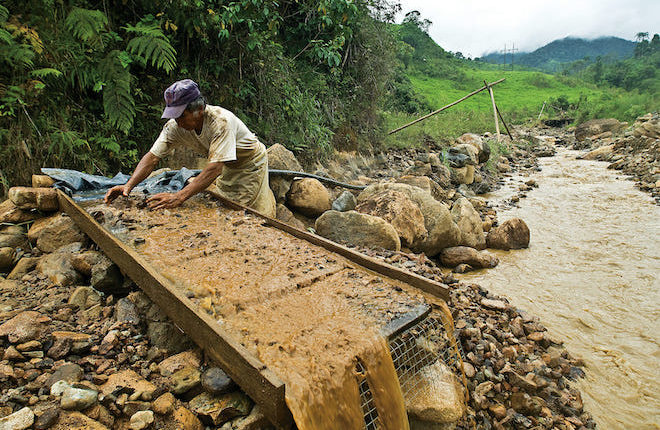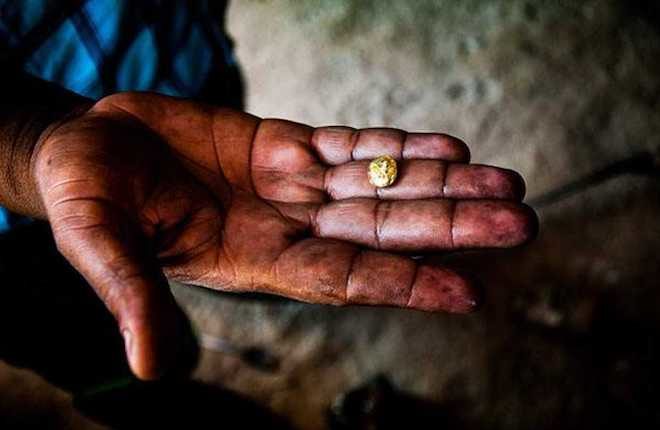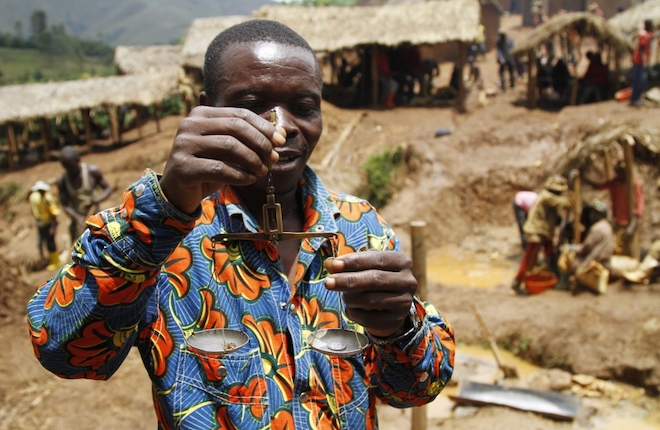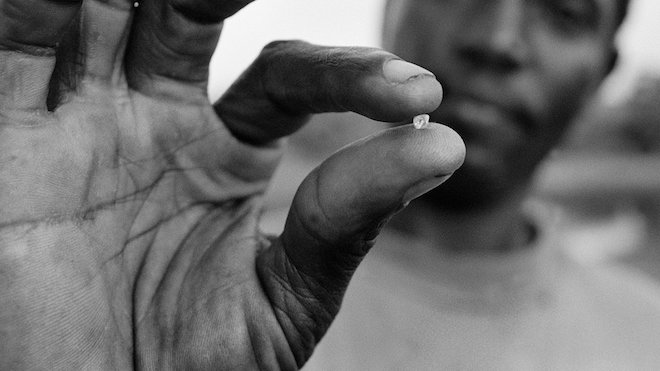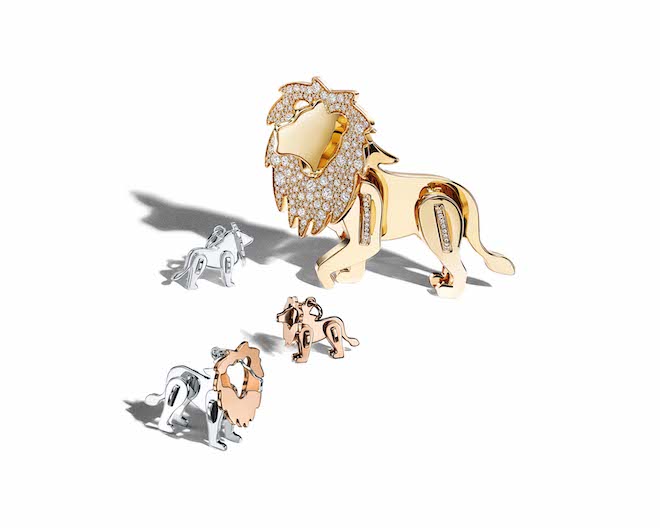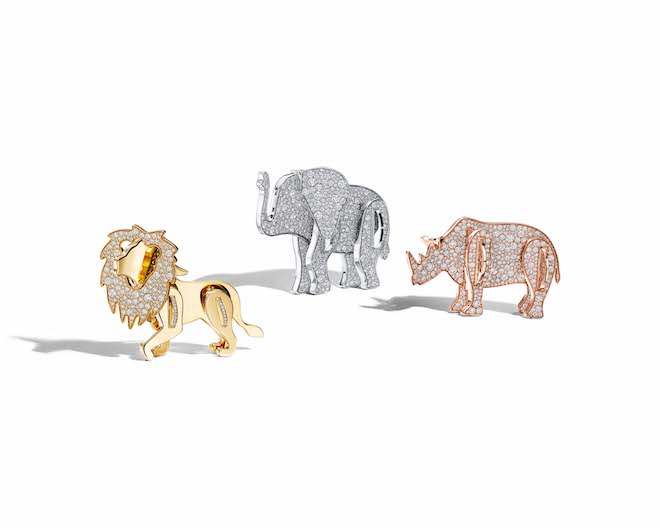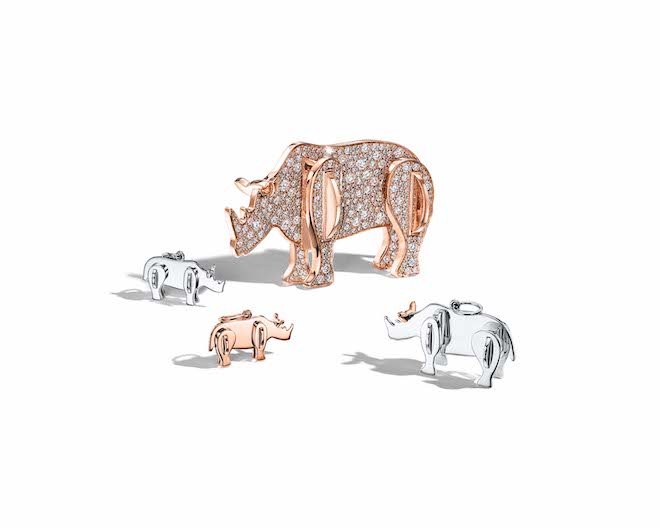How Tiffany & Co earned 4th most sustainable American company on Barron’s Annual List
Barron’s in association with Calvert Research & Management just released their Annual 100 Most Sustainable Companies in America and Tiffany & Co moved 12 positions from 16 to 4th place.
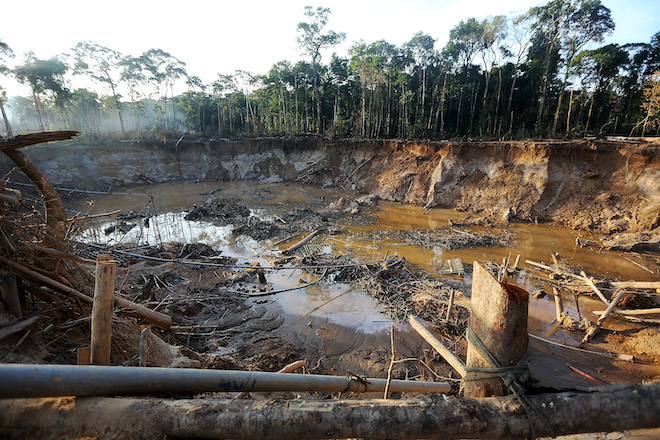
An gold illegal mining operation is seen in the Amazon lowlands. Small-scale miners are drawn to the area in hopes for higher pay but often face abysmal conditions. Gold is usually amalgamated with mercury during the process of informal mining in the region, which is discharged into the water supply and air, poisoning fish and sickening people in the area. Peru is the largest producer of gold in Latin America and the sixth-largest in the world. Photo by Mario Tama/Getty Images)
The concept of producing sustainable and socially responsible jewellery where – goods must not only be derived from sustainable production sources, but also assembled from fairly paid labour – is not a new one but it has been until fairly recently, a practical contradiction of terms. After all, the majority of the world’s gold is extracted from open pit mines, where huge volumes of earth are scoured and processed for trace elements. According to MIT, open pit mining is one of the most common forms of mining but because the desired minerals are often only available in small concentrations, this increases the amount of ore needed to be mined, and thus, makes it the most environmentally damaging.
Environmental hazards are present literally at each step of the open-pit mining process. Hardrock mining releases radioactive elements, asbestos-like minerals, and metallic dust. These mixtures of pulverised rock and liquid, essentially “residual rock slurries” can potentially leak toxic and radioactive elements into the bedrock as a result.

Sustainable Jewellery: Contradiction or Possibility?
Lacking precautions, large amounts of water used for mine drainage, cooling, and aqueous extraction and other mining processes, increases the potential for high concentrations of arsenic, sulfuric acid, and mercury to contaminate surface or subsurface water. Salt on injury, the runoff containing these chemicals can also devastate the surrounding vegetation. Worse still, air quality is also compromised by hundreds of tons of airborne elemental mercury each year. And dirty gold, is only getting dirtier as Alan Septoff explains:
“What we have left in most mines is very low-quality ore, with a greater ratio of rock to gold,” said Septoff, communications manager for the No Dirty Gold in a statement to Smithsonian Magazine in 2014, he continues, “There is no such thing as clean gold, unless it’s recycled or vintage.” In effect, this makes the energy required to mine gold and also the waste and pollution produced in the process an ever worsening spiral.
The challenges of sustainably produced jewellery also increase exponentially when you consider that most high jewellery accessories are also made with precious gemstones or diamonds, which are themselves sourced from the earth through a variety of similar mining processes, each environmentally damaging to various degrees.
Then there is of course, the social element – the Leonardo Di Caprio film Blood Diamond raised awareness that some diamonds may be connected to human rights abuses, militia funding and genocide. Though the Kimberley Process of 2003 was designed around the concept of traceability “ensuring that diamond purchases were not financing violence by rebel movements and their allies seeking to undermine legitimate governments”, bringing the percentage of conflict gems down from 15% in the 90s to 1% today, the many firms that are still associated with “blood diamonds” thanks to wars in Angola, Sierra Leone and Congo, are still thriving.
Worst of all, there are inherent criminal complications with traceability further exacerbated by under-invoicing and other illicit manipulation of reported income or tax avoidance excluded from the definition of ‘conflict diamond’ enabling 99% of the “clean diamond” industry to exist largely because the real violence is largely whitewashed or undefined. The Kimberley Process lost a large amount of its integrity after Global Witness, a key member, withdrew in December 2011. It is thus, highly likely, that for a good majority, there is no such thing as an ethical diamond, most of these stones might be questionable at best and only a minority has impeccable provenance.
Therefore a high ranking for sustainability is tantamount to nigh unattainable for a jeweller. Or is it?
How Tiffany & Co earned 4th most sustainable American company on Barron’s Annual List
“Sustainability lies at the heart of the Tiffany & Co. brand—it’s both our legacy and our futre. Tiffany’s promise to the world is to protect its beauty, nurture its people and conduct our business with care.” —Alessandro Bogliolo, chief executive officer, Tiffany & Co.

Alessandro Bogliolo, CEO of Tiffany & Co just shared that the American jeweller moved up from their 2019 rank 16 position to become the 4th Most Sustainable Company in America according to Barron’s Annual Ranking on American corporate sustainability.
According to Bogliolo, values of sustainability are at the core of the 182 year old jeweller because “as makers of beauty and caretakers of the natural world”, they endeavour to bring joy to their customers.

Recently acquired by LVMH, Tiffany & Co is a global luxury leader and as such, come the responsibilities of stewardship. In 2019, they launched the Diamond Source Initiative, identifying for their customers the provenance (region or countries of origin) of all newly sourced, individually registered diamonds, and together with their partners, they established a new global standard for responsible mining for the industry. It’s not just the gift of beauty but also the full confidence that their beloved jewellery meets industry leading standards for environmental protection, human rights and transparency.
Working with PricewaterhouseCoopers LLP (PwC), Tiffany & Co is independently assessed on four key sustainability metrics: traceability of raw materials, employment and diversity, grantmaking, and GHG emissions and renewable energy.

Coloured stone in the literal rough
Though 2019’s figures are not immediately available, LUXUO can trace Tiffany & Co’s surge into 4th place on Barron’s Annual Ranking on Most Sustainable Company in America through their Fiscal Year 2018 efforts: since 1998, Tiffany & Co made dedicated effort to responsibly source their precious metals: gold, platinum and silver.
In Fiscal Year 2018, 99% of the raw precious metals purchased by the American jeweller directly were traceable to mines in the United States or from recycled sources. Tiffany & Co has been applying industry-leading practices such as Earthworks’ No Dirty Gold Golden Rules criteria for socially and environmentally responsible gold mining since 2005. Combined with robust protocols on conflict minerals to minimise the potential for financing armed conflict and human rights abuses through our purchase of gold. In fact, just last year, Tiffany & Co began to source small amounts of artisanally mined metals through a U.S. pilot project that was designed to create environmental benefits while practicing responsible mining techniques.
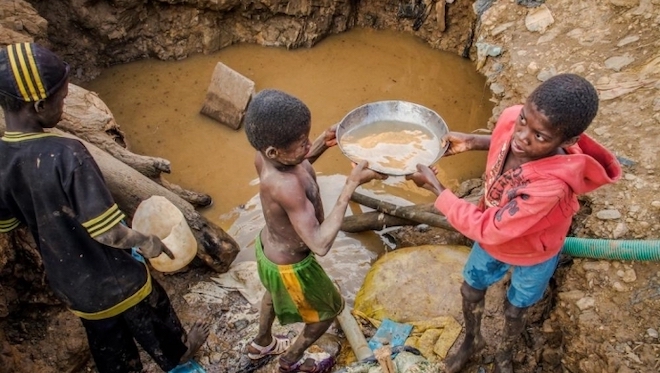
But what of precious stones? According to estimates, approximately 80% of the world’s coloured gemstones come from small-scale, artisanal mines spanning more than 40 countries; making the clear tracing of a gem’s origins arduous if not nigh impossible. Using strict protocols to source approximately 70 varieties used in Tiffany’s various collections, the iconic jeweller is helping set industry standards that account for the realities of the supply chain, while seeking to increase transparency and traceability. In territories where transparency is in doubt and human rights violations are rampant (e.g. Afghanistan and Myanmar), the decision is then to stay away from those sources completely. These standards and best practices are then shared to promote responsible gemstone supply chains. Matters of logistics are then supported through industry partnerships and philanthropy where The Tiffany & Co. Foundation supports a diverse range of stakeholders, from miners and traders to cutters and polishers, to help the gemstone sector support sustainable livelihoods and its extended community.

While Tiffany & Co. does not own or operate any mines on which their various jewellery collections depend on, it is without doubt that the company upholds its best standards acrossits supply chain while ensuring that their suppliers are aligned with those values and policies. Furthermore, Tiffany works to promote change beyond its own operations, working with nongovernmental organisations (NGOs) and the industry at large to create positive change and lend our expertise through multi-stakeholder initiatives to encourage more responsible mining, even launching the Initiative for Responsible Mining Assurance (IRMA) in 2006, becoming a founding member of the Responsible Jewellery Council and as the first jeweller to apply Earthworks’ No Dirty Gold Golden Rules beginning in 2005.
- In 2017, the company launched the Tiffany Save the Wild collection to help raise money and awareness for the protection of elephants, expanding the following year to include rhinos and lions. 100% of profits benefit the Wildlife Conservation Network.
Ultimately, Barron’s in association with Calvert found that companies that are focusing on operating sustainably, taking care of employees, creating a more diverse workforce, and giving back to communities tend to perform well as investments, As a group, the 100 companies returned 34.3%, on average, in 2019, beating the S&P 500 index’s 31.5% return last year.
Mbugua added that customers are demanding more of their companies, and tend to favour those more in line with their values. “Reputation risk” is also a factor pushing companies to take a close look at their environmental and social practices. If a company like Tiffany sourced from an unethical mine, for instance, it would likely hurt sales, sentiments mirroring LUXUO’s own 2019 Luxury Report studying the analysis of the Big Four consulting firms.
Tiffany & Co. relies on renewable energy for 82% of its energy use, its board is 50% female, and even part-time workers receive benefits.

